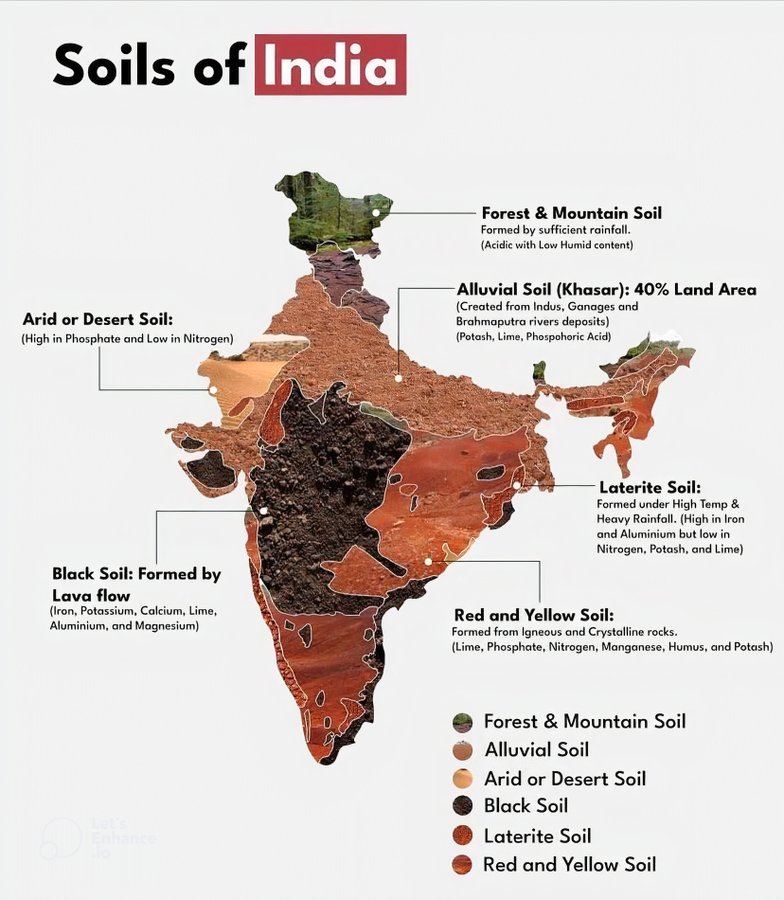Himalayan Geography
- The Himalayas form the highest mountain range in the world, extending 2,500 km over northern India. Bounded by the Indus River in the west and the Brahmaputra in the east, the three parallel ranges, the Himadri, Himachal and Shivaliks have deep canyons gorged by the rivers flowing into the Gangetic plain.
- Northern Mountain complex can be divided into two parts. Geographically Himalayas and trans Himalayas are separate entities.
Parts of Northern Mountain Complex
- Trans Himalayas
- The Himalayas
- The Eastern or Purvachal Hills
Trans Himalayas - Formation
When Eurasian plate completely sub ducted the Indian Oceanic plate, continent ocean convergence took place between Indian continental crust and Eurasian oceanic crust which led to subduction of oceanic plate.
Basaltic oceanic floor of Eurasian plate went into(subducted beneath) Indian plate and came out in the form of Andesitic rock on the margin of the plate. This range was formed as ‘Karakoram range’ formed on border of Eurasian. They are not part of Himalayas.
Location
It is situated to the north of the Great Himalayas. It has Karakoram Ladakh, Zaskar and Kailash mountain range. The Karakoram range is called the backbone of high Asia.
The mountainous complexities of the Himalayan region can be understood in a simple way with the help of the given figure. The Indus river flows between Zaskar and ladakha ranges. It creates the deepest gorge in India (5200 m. deep) by cutting Ladạkh range at the place named Bunzi.
Main ranges
- Zaskar range (India)
- Ladakh range (India)
- Karakoram range (India/Pakistan/China)
- Kailash range (in Tibet)
Zaskar range
- Nanga Parbat (8126 m) and Deosai mountain are important parts of it.
- Situated on the western part of the Greater Himalaya and to the south of Trans Himalaya.
- It is part of the Tethys Himalayas. It extends from Uttaranchal to Jammu and Kashmir.
Ladakh Range
- It is about 300 km long and its average elevation is 5800 m.
- Rakaposhi – Harmosh ranges are extension of it.
- South of Ladakh range Indus originates & meets with ‘Syok River’.
Karakoram range
- Northern most range of trans-Himalayan ranges are called Karakoram range. They are known as Krishnagiri range. It acts as frontier between India & China.
- Extend from the Pamir, east of the Gilgit River, 600 km long and the average width -120-140 km .
- Trans Himalaya, originally a part of Eurasian plate.
- Abode of largest glaciers in India.
- Siachen, Baltoro, Biafo, and Hisper glaciers.
- Highest peak (in India): K2 or Godwin Austen (8611 m).
- Other important Peaks: Gasherbrum I or Hidden Peak, Broad Peak and Gasherbrum II.
- In the northern limit of Karakoram range lies the Pamir, the Aghil Mountains, and the Yarkand River and in the southern limit lies the River Indus and its tributary Shyok.
Kailash range
- It is also called Gangdise in Chinese.
- Kailash range is offshoot of Ladakh range.
- Highest peak is mount Kailash (6714 m).
- Indus river originates from northern slope of Kailash range.

